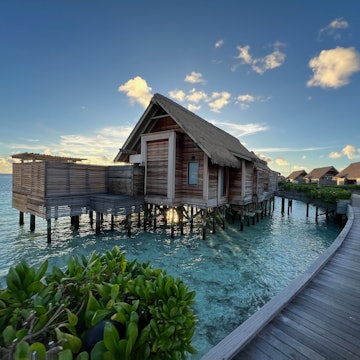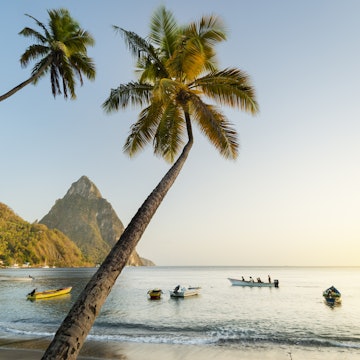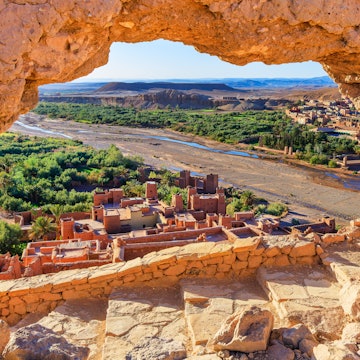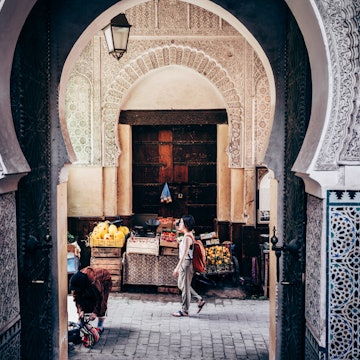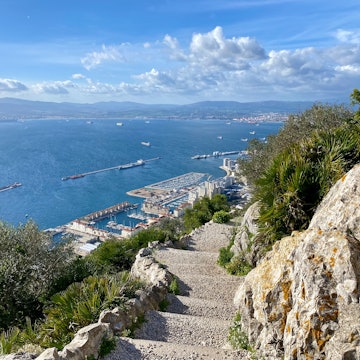

Kitesurfers in Dhakla, Morocco. Cesare Palma/Shutterstock
From dreamy cities and seaside escapes to high mountain passes and haunting desert dunes, Morocco has fantastic destinations for visitors year-round, but choosing when to travel to depends on what you plan to do when you get there.
The mild months from October to April see an influx of tourists from the northern hemisphere. For the rest of the year – especially in July and August along the coast – Morocco is busy with both domestic and international travelers.
From eating local cuisine to exploring the rich culture, find the best time for your trip to Morocco with this seasonal guide.

March to May and September to November are best for hiking and visiting Marrakesh
Weather in Morocco in shoulder seasons: For sunny days and temperatures that aren't too hot or cold, visit Marrakesh in spring (March to May) or fall (September to November).
During May and October, you can get around comfortably in Morocco’s portion of the Sahara Desert. Sandstorms occur from January to May, but Saharwians are used to these storms; follow their lead by wearing a Tuareg scarf to protect your face from the sand and sun.
The High Atlas Mountains are a year-round hiking destination, but the weather is mildest from April to June and September to November, with ideal conditions for people of all fitness levels. In May, you'll see the M’Goun valley come alive for a festival of roses. If you prefer lower altitudes, consider a visit to the Anti-Atlas range in springtime. This season is for wildflowers, spring blossoms in the trees and quiet hiking trails. An annual almond blossom festival takes place in Tafraoute in February or March, depending on when the trees flower and the harvest.
The mild spring and fall are also the best times to see migratory birds. The top birding spot on the coast is Oualidia; its peaceful lagoon is a haven for resident and migratory waterbirds. Souss-Massa National Park also attracts migratory birds, which gather here in large numbers before or after their Atlantic crossings.
September is probably the best month for good weather and fewer crowds, when domestic and international travelers head back to school and work after the August summer holidays. The weather is warm, with long sunny days, balmy waters and quiet beaches. It's also an excellent month to visit the top cultural sights in the coastal cities of Essaouira, Rabat, Casablanca, Tetouan and Tangier.

December to February is the season for celebrations, surfing and skiing
Weather in Morocco in winter: The weather can be cold and wet from December to February, especially in the north, and nights can be cold, especially in riads (courtyard homes) without central heating, but winter is an excellent time for urban exploration. Days in the desert are shorter during the winter months and the nights and early mornings can be freezing, particularly when sleeping under canvas.
In Marrakesh and other hubs popular with foreign residents and visitors, you can enjoy epic celebrations over the Christmas and New Year holidays. However, prices increase significantly during the peak vacation dates from December 22 until January 7. Yennayer, the Amazigh New Year, falls in the first week of January, so there may be some local festivities around at this time as well.
In deep winter, the peaks of the High Atlas are covered in snow, should you prefer to ski down rather than hike up mountains. The snow can create hazardous conditions for driving on remote roads, though, and some routes will close. But the main skiing areas – Oukaimeden and Ifrane – are accessible, and skiing can be a perhaps unexpected and fun addition to a North African adventure.
The Atlantic swell is most consistent on the Moroccan coast in winter. December to February see the largest waves, and surfers flock to Taghazout, Mirleft, Sidi Ifni and other spots along Morocco’s west coast. A lively center for surf culture, Taghazout hosts an annual surf expo in October and international competitions in January and February.

June to September is the best time for festivals and kitesurfing
Weather in Morocco in summer: Avoid the summer months of June to August if you don't cope well with the heat. During July and August, inland temperatures can soar to over 38°C (100°F), but on the Atlantic coast, cooling breezes and misty fog keep temperatures down to around 27°C (80°F). Excessive heat means most desert camps close from June to August.
Morocco’s long summer days and nights are ideal for outdoor music events, and bands and musicians fill venues nationwide. Top festivals to look out for include the Fez Festival of World Sacred Music (dates vary from late May to September); Essaouira’s Gnaoua and World Music Festival and Rabat’s Mawazine – one of the world’s largest festivals – in June; and an art festival in Asilah and Casablanca’s Jazzablanca in July. Book accommodations well in advance and be prepared for higher prices.
Agadir, Dakhla and Essaouira are particularly popular with domestic travelers in August, thanks to the lifeguard-protected beaches. While the Moroccan sun is strong, beach parasols and covered outdoor seating areas are easy to find, and the ocean is calmer and warmer – perfect for swimming, riding pedal boats and stand-up paddleboarding. The mellower waves from June to November are suitable for beginner and intermediate surfers.
Consistent trade winds from the Atlantic make kitesurfing and windsurfing possible all year at several flat water spots in Essaouira and Dakhla, but April to September have reliable high winds because of the thermal effect along the Moroccan coastline. An annual kitesurfing competition is held in Dakhla at the end of September, drawing competitors and spectators from around the world.
Experience Morocco without the crowds during Ramadan
Check the dates for Ramadan, as they vary year to year. This sacred period is a quiet and spiritual time to experience Morocco. Though many food establishments close during the day, you'll still find places to eat at hotels.









